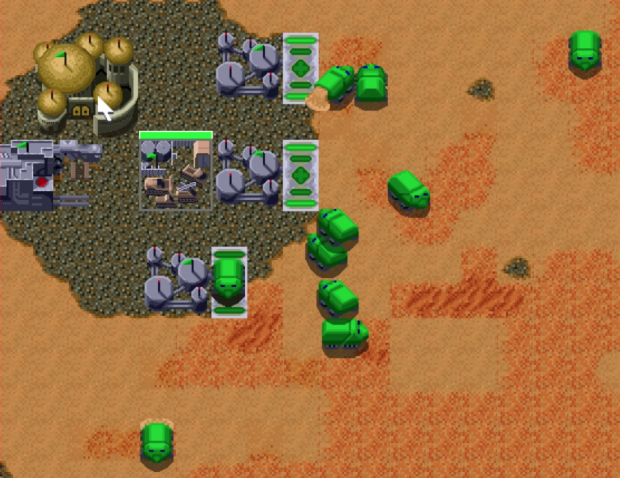In my previous post I announced the start of my dream: building my own game.
In this post I will elaborate further about the goal I have set and how I intent to reach that goal. Writing a game is, like any project, quite a challenge. It is a continuous process of ‘zooming in’ (doing the actual work) and ‘zooming out’ (keeping an eye on the bigger picture). Only that way you can be sure you reach the goal in the most efficient manner.
Like any project, to keep it clear what to do, there is a list of tasks. It is wise to (ball-park) estimate how much time they will consume. At the same time there is a desired ‘launch date’. This brings a certain tension as you want as much value (features/tasks) done on launch date. Usually you have a minimal amount of tasks you have to get done.
Since I am now the developer and ‘product owner‘ at the same time I experience both sides. I need to investigate what to do to reach my goals. At the same time estimate and do the actual work.
This blog post covers the questions:
- What needs to be done?
- When will they be done?
- What is the ‘end-date’?
What needs to be done?
In the grand scheme of things (zoomed out), roughly:
- make the game ‘feature complete’
- make my own graphics, sounds, etc
- easily distributable & installable
What is ‘feature complete’?
I am heavily inspired by the first versions of C&C (RA), and I feel that to have a minimum playable game there should be at least:
- 1 resource to ‘mine’ to earn money with (est: 8 hours)
- 1 ‘power’ resource (est: 4 hours)
- 1 faction to play with as a player (est: 0 hours)
- A simple tech-tree (structures) (est: 8 hours)
- Central structure to produce other structures (Const yard in C&C)
- Power plant
- Barracks
- Factory
- Refinery
- A few units which have a Rock-Paper-Scissors mechanism (est: 16 hours)
- Infantry
- Two types: rocket launchers and soldiers
- Light unit (fast, trike/quad)
- Heavy unit (tank)
- A (random generated) map to play on (est: 4 hours)
- A very simple AI to play against (est: 12 hours)
- A clear objective (ie, destroy enemy) (est: 4 hours)
- A beginning and ‘end’ of the game. (menu to start from, and ‘game won/lost’ screen). (est: 8 hours)
And I think if you really want to push it you can shave off some features. I believe the first step is to get ‘full circle’ as soon as possible. Meaning you have a concept of a game. It has a beginning and an end.
From here on I can expand scope to my ideal game. But not before I have done the two other important things.
Estimation: 64-80 hours (20% deviation)
Make my own graphics, sounds, …
The next important part is graphics, sounds, music, story, etc. As for graphics. At the moment I use Dune 2 graphics as placeholders. Once I have the game mechanics in place and I know which units/structures I need for the minimum version I can start creating/getting these. So in a way they are not required immediately, but they are required whenever I want to commercially release my own game.
Changing the graphics will have impact on some implementations for sure, although I do set up the code as flexible as possible, there are always cases that I have not thought about.
There is a caveat. Creating graphics is hard. It is not my primary skill. To tackle this I could:
- learn to create my own (? hours)
- find someone else who is willing to do graphics for me (0 hours, but $$$)
- find premade graphics in a market place and use that (4 hours searching, and $$$)
The same logic can be applied to Sounds, possibly Music.
Seriously: this is a risk and I need to decide which strategy to get a more reliable amount of hours.
Easily distributable & installable
Release early, release often. It is a phrase I use all the time when I am working at clients. The same goes for my game. There is a difference however. Usually I work on mid-large web applications. There is no need for customers to install anything to use the latest version of the website. When an organisation has implemented Continuous Deployment, it can easily deploy new versions at will. Customers automatically have the latest version upon a new visit of the website.
For applications that need to be installed there are several platforms out there. There is a reason why the concept of an ‘App store’ is famous. It delivers a web-like experience.
There is a lot to win here, the first step though is to make sure any user is able to download a distribution for their platform (Windows, Mac OS, Linux) and able to install the game. I already took the liberty of wanting to support these platforms. So yes, I target the PC platform. No mobile, game console, etc.
In that sense there are a few steps to be taken:
- Offer a distribution somewhere (website? distribution platform? need to figure out)
- Provide an easy installation procedure (how? install4j? etc)
- Provide an app-store like experience. (use a distribution platform like Steam?)
Estimation: 8-16 hours
Estimation is based on creating an installer.
When will it be done?
Ok great, so there is a lot to do. So when will all this be done?
Lets bring a few numbers together. The estimates and the available time.
Bringing the estimates together
I just take the hours from all 3 paragraphs above, and sum them.
Min: 64 + 0 + 8 = 72
Max: 80 + 0 + 16 = 96
(I purposely did not add the 10.000 hours from the graphics section, it seriously is way too unsure).
So basically, I am estimating that 72 to 96 hours should be enough. Meaning, given an 8 hour work day it would take 9 to 12 days to get a minimum version which is distributable in the easiest way. Without doing anything about graphics, sounds, etc. (using dune 2 graphics as ‘stub’)
Estimated time needed: 72 to 96 hours
This excludes graphics.
How much time do I have?
To calculate the amount of time I have realistically I also do a min/max calculation. The minimum amount being the amount I am 100% sure of I have. The max being added hours I probably can spend, but I should not count on it.
Minimum hours are easy. I have at least 8 hours a week (1 work day a week) to spend. And every 8 weeks I take a week off to spend even more time. This means in a period of 10 weeks I can spend 14 days.
The max would be weekly 0 to 8 hours more. I can spend a weekend sometimes, an evening, sometimes more evenings. It really depends on a lot of things.
I like to think in periods of 10 weeks, I consider a full 10 weeks as an ‘iteration’. When working on Magic Gatherers we used this mechanism and it worked out pretty well. Also, every iteration had a particular focus. The first iteration there was ‘from idea to launched product’ for instance. For this game it would be different of course.
One other aspect with time is ‘when should it be done?’. The easiest thing would be to use the iteration end-date. Considering that the first work-day is within this week, this week is counted as the first of the iteration. An iteration of 10 weeks will mean the end date is 29th of october.
Meaning:
End-date: 29th of october 2017
Time available: 14 days to 19 days (112 to 152 hours)
Looks like an easy feat!… oh wait, I have seen this before. This probably means I forgot something. Ah yes, the graphics… and so much more unknowns. Looks like it will be a close one.
So when will it be done?
Yes, good question, so in this case I choose to use the fixed-time flexible scope approach. Although I do know if the minimal scope is not met I will not launch the product. Then again, I really DO want to launch a product so I probably will be very harsh on the scope and just make it fit.
This brings me to another topic, priorities and goal. What do I try to achieve with releasing something at the end of iteration #1? I will elaborate on that in a different blog post.
Conclusion
It looks like it is feasible to get a minimalistic feature complete game done within the first iteration. That would mean at the 29th of october (latest) a downloadable and installable game should be available.
However, there are more things that need to be done that were not explicitly defined in overall 3 phases. You can think of, writing dev blogs, youtube video’s for demoing features, a monthly in-depth video for Patrons and so forth.
The only way to know is to just do it!


